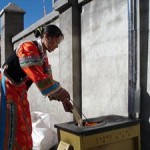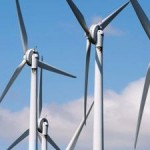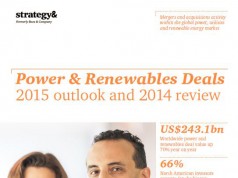Nairobi – Replacing the millions of kerosene lamps, candles and flashlights used worldwide with modern solar lighting can provide an increasingly low-cost solution to reducing carbon emissions, indoor air pollution and health risks, and boosting green jobs, according to new studies from the United Nations Environment Programme (UNEP).
UNEP has also announced a new strategic partnership with the private sector to facilitate a market shift towards energy-efficient, off-grid lighting and to reduce the estimated 74 million tons of annual carbon emissions from fuel-based light sources commonly used in developing countries.

The collaboration with the Global Off-Grid Lighting Association (GOGLA) will see the launch of an international effort to accelerate the deployment of enabling policies towards sustainable off-grid lighting.
To underscore the new partnership, the UNEP-led en.lighten Initiative has unveiled new national assessments for 80 countries on the economic and environmental gains that can be achieved through a shift to solar-powered alternatives.
The studies show that if Kenya, for example, replaced all fuel-based lighting with solar-powered light emitting diode (LED) systems, the costs would be repaid in only seven months, due to major fuel savings. Kenya currently spends around US $ 900 million per year on off-grid lighting, and fuel-based light sources in the country are responsible for over 2.3 million tons of carbon dioxide (CO2) emissions per year.
“Replacing the world’s 670 million kerosene lamps with cleaner, safer solar-powered lighting represents a major opportunity to deliver across multiple fronts, from cuts in global carbon emissions, health risks from indoor air pollution, support for green technologies and the generation of green jobs,” said UN Under Secretary-General and UNEP Executive Director Achim Steiner.
“UNEP’s new partnership with GOGLA strengthens our ongoing work with some 50 developing countries and leading lighting companies to move away from incandescent and other inefficient light bulbs. Supporting both sustainable off-grid and on-grid lighting can bring about major financial savings in a short time, as well as additional educational, health and environmental benefits towards the achievement of the Millennium Development Goals,” added Mr. Steiner.
“GOGLA is the industry advocate for promoting clean, quality off-grid lighting systems that benefit society and businesses in developing and emerging markets,” said Wolfgang Gregor, Secretary-General of the Global Off-Grid Lighting Association (GOGLA). “We want to ensure that decision-makers and government officials are aware about the importance of modern off-grid lighting solutions and recognize the potential of this multi-billion dollar market. This will lead to the implementation of policies that address product quality standards and environmental issues and create sustainable employment.”
Country Lighting Assessments Highlight Significant Savings
Globally, over 1.3 billion people live without access to electric light. Some 25 billion litres of kerosene are used annually to fuel the world’s kerosene lamps, which costs end-users a total of up to US $ 23 billion each year. This has an even higher price-tag if government subsidies are taken into account.
If Nigeria used modern off-grid lighting solutions, according to the UNEP assessment, the country could save over US $ 1.4 billion annually. Replacing all of the kerosene, candles and batteries used annually for off-grid lighting would save Nigeria the equivalent of 17.3 million barrels of crude oil.
In addition to saving money and reducing greenhouse gas emissions, phasing out kerosene lamps and candles greatly reduces risks from burns, fires, and respiratory illnesses caused by indoor smoke. Eliminating the need for flashlights powered by disposable batteries will also greatly reduce hazardous waste disposal in landfill and related environmental damage.
Although solar LED systems have a higher initial cost than traditional fuel-based lamps, the payback period can be very short due to the high running costs of fuel-based lighting systems. The UNEP assessments show that the payback period in most countries is less than a year, and sometimes just a matter of months, depending on the cost of the LED system and the local price of kerosene.
They are the first studies of their kind to analyze the magnitude of financial savings, health benefits, development and carbon emission reductions that a coordinated global transition to modern and sustainable off-grid lighting solutions can deliver.
New Initiative on Off-Grid Lighting in West Africa
UNEP is also launching a new programme in cooperation with the German government to work directly with West African countries to accelerate a transition to sustainable, off-grid lighting.
On average, 76 per cent of the population in West Africa lacks access to electricity and spends up to 20 per cent of the household budget on kerosene for lighting. Efficient off-grid lighting systems are available in the region and can deliver high performance, affordable and better quality lighting.
Germany’s Federal Ministry for Economic Co-operation and Development (BMZ) is providing support to UNEP to facilitate the development of a regional policy to enable the penetration of sustainable off-grid lighting solutions in the Economic Community of West African States (ECOWAS) region. GOGLA will contribute to this initiative by providing the industry insight necessary to assist with the development of policies and programmes.
The joint effort supports the UN Secretary-General’s Sustainable Energy for All Initiative and its goal of achieving universal access to modern energy services by 2030.
Key Facts
- Over 1.3 billion people worldwide live without access to electric light.
- There are approximately 900 million inefficient off-grid light points in use.
- Annual global expenditure on kerosene for lighting may be as high as US $ 23 billion, for candles up to US $ 7 billion and on batteries for flashlights up to US $ 2.5 billion.
- Consumers in Africa spend between US $ 12-17 billion annually on fuel-based lighting.
- Consumers in Asia spend between US $ 9-13 billion annually on fuel-based lighting.
- Solar lighting systems source energy from the sun so there is no running cost and no emissions when in use.
- Solar LED systems improve the quality of light and eliminate the health risks associated with fuel-based lighting such as burns, house-fires, carbon monoxide, volatile organics, black soot and other air quality problems.
- The wide-spread use of modern, off-grid lighting technologies delivers significant socio-economic, health and environmental benefits including: new income generation opportunities for small businesses; longer hours and better illumination for studying; improved safety by reducing the fire hazard associated with flammable fuels; and improved health from less indoor air pollution and greenhouse gas emissions.
Source: UNEP.















